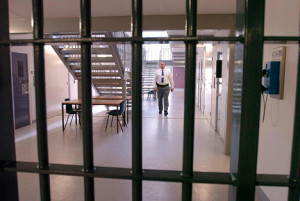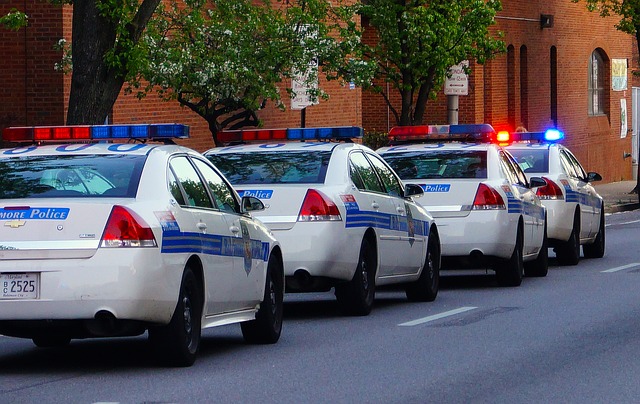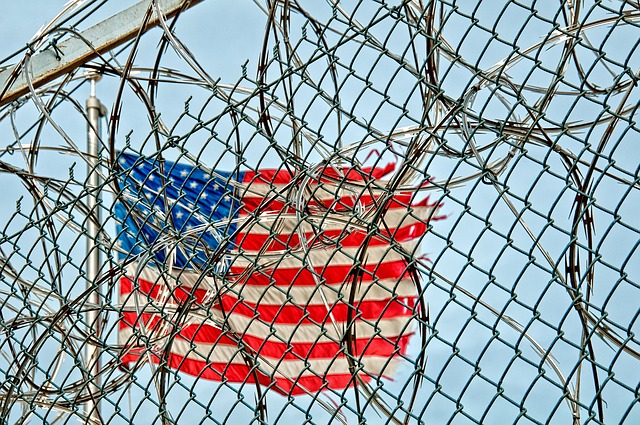 Analyzing the yearly crime rates provides for quick talking points, but rarely provides enough data to make accurate conclusions about larger trends in crime. Therefore, a more effective way to measure the direction of a state, county or city is to measure trends by the decade. This can be a tedious process, but overall paints a better picture of where our communities stand. Yearly crime data compiled by the Governor’s Office of Crime Prevention is not officially released for a given year until about two years have passed. Data from 2020 was recently released, and after examining trends from 2011 through 2020 the major takeaway is that overall crime has dropped, but certain violent crimes have not followed suit.
Analyzing the yearly crime rates provides for quick talking points, but rarely provides enough data to make accurate conclusions about larger trends in crime. Therefore, a more effective way to measure the direction of a state, county or city is to measure trends by the decade. This can be a tedious process, but overall paints a better picture of where our communities stand. Yearly crime data compiled by the Governor’s Office of Crime Prevention is not officially released for a given year until about two years have passed. Data from 2020 was recently released, and after examining trends from 2011 through 2020 the major takeaway is that overall crime has dropped, but certain violent crimes have not followed suit.
Property crimes such as burglary have steadily declined, with overall numbers decreasing from roughly 30,000 cases in 2011 to less than 15,000 in 2020. Motor vehicle thefts have also decreased from about 16,000 cases in 2011 to about 10,500 in 2020. Motor vehicle theft cases have been steadily decreasing over the past several decades due to technological advances in cars, but a 33% decrease in 10 years is still significant. Overall, in 2011 there were a total of 114,871 reported theft cases in Maryland, and in 2020 there were 72,865. This decrease in property crimes cannot be ignored, and is hopefully a sign of better times ahead. On the other hand, there is still cause for concern about the number of violent offenses committed in Maryland each year.
In 2020 there were 573 homicide cases in Maryland, which is the highest number in almost 25 years when the state reported 588 homicides in 1996. 334 of these homicides were committed in Baltimore City, and 92% were committed with a firearm. Also, less than half of these homicides (47%) resulted in an arrest, which is a staggering percentage. There were significantly more reported rape case in 2020 than in 2011, and as a whole both the homicide and rape numbers seem to be steadily increasing over the last 5 years. The rape numbers may have increased due to greater awareness and a higher percentage of these cases being reported to law enforcement. Aggravated assault cases, including first degree assault by strangulation or assault with a firearm, have been decreasing slightly and robbery numbers are down throughout the state, but neither of these trends makes up for the increasing murder and rape numbers. What is significant is that 2020 saw the fewest incidents of reported violent crime in Maryland since the beginning of the record keeping in 1980. Part of this relatively low number in 2020 could be attributed to Covid and people staying at home, so it should be taken with a grain of salt, but the progress is undeniable.
 Criminal Defense Lawyer Blog
Criminal Defense Lawyer Blog






 News trucks and National Guard Humvees are no longer lining the streets of Baltimore, but the city is still experiencing elevated crime levels and widespread violence following riots that generated worldwide attention. Forty-two people were murdered within city limits last month, the highest monthly total in over 40 years, and millions of dollars worth of narcotics have fallen into the hands of drug dealers in the last few weeks. The murder rate is attributed by some as a direct result of a lower police presence in high crime areas, exactly the opposite of what is needed. Police in the tensest areas such as the western district of Baltimore City have allegedly shifted their priority to self-preservation rather than protecting the public. According to an anonymous supervising officer who was interviewed on CNN, cops in the western district are basically ignoring orders from the police leadership to vigorously patrol, and are just simply responding to 911 calls. This passive approach is likely causing a sense of lawlessness in certain areas, and in turn wrongdoers are becoming bolder. Although the police commissioner has no plans to step down, there is growing discontent about the department’s leadership going forward. One city councilman has publically called for a new police commissioner, stating that he knows rank and file officers have lost confidence and respect for their commander. This environment has officer moral and motivation at an all time low, and city residents are suffering the consequences.
News trucks and National Guard Humvees are no longer lining the streets of Baltimore, but the city is still experiencing elevated crime levels and widespread violence following riots that generated worldwide attention. Forty-two people were murdered within city limits last month, the highest monthly total in over 40 years, and millions of dollars worth of narcotics have fallen into the hands of drug dealers in the last few weeks. The murder rate is attributed by some as a direct result of a lower police presence in high crime areas, exactly the opposite of what is needed. Police in the tensest areas such as the western district of Baltimore City have allegedly shifted their priority to self-preservation rather than protecting the public. According to an anonymous supervising officer who was interviewed on CNN, cops in the western district are basically ignoring orders from the police leadership to vigorously patrol, and are just simply responding to 911 calls. This passive approach is likely causing a sense of lawlessness in certain areas, and in turn wrongdoers are becoming bolder. Although the police commissioner has no plans to step down, there is growing discontent about the department’s leadership going forward. One city councilman has publically called for a new police commissioner, stating that he knows rank and file officers have lost confidence and respect for their commander. This environment has officer moral and motivation at an all time low, and city residents are suffering the consequences. Almost 30 years ago the federal government took its war on drugs to new heights by proclaiming a zero tolerance policy. All drug crimes from trafficking to possession were to fall under this new initiative, and billions of dollars were spent on incarcerating offenders. Along with the fancy tag names and plentiful resources came new legislation that kept even non-violent, first time drug offenders in jail for years. Minimum mandatory prison sentences were established, and became a major source of power for the justice department, and subsequently for federal and state prosecutors. A minimum mandatory sentence requires a judge to hand down a specific prison sentence upon a finding of guilt, either by a plea or a guilty verdict at trial. Many of these sentences exclude a defendant from parole eligibility and even gain time for good behavior. While the stated goal of these sentences was to deter drug crimes, all they really did was cause severe overcrowding of prisons across the country. Not to mention creating an environment where non-violent drug offenders were serving more time than armed robbers.
Almost 30 years ago the federal government took its war on drugs to new heights by proclaiming a zero tolerance policy. All drug crimes from trafficking to possession were to fall under this new initiative, and billions of dollars were spent on incarcerating offenders. Along with the fancy tag names and plentiful resources came new legislation that kept even non-violent, first time drug offenders in jail for years. Minimum mandatory prison sentences were established, and became a major source of power for the justice department, and subsequently for federal and state prosecutors. A minimum mandatory sentence requires a judge to hand down a specific prison sentence upon a finding of guilt, either by a plea or a guilty verdict at trial. Many of these sentences exclude a defendant from parole eligibility and even gain time for good behavior. While the stated goal of these sentences was to deter drug crimes, all they really did was cause severe overcrowding of prisons across the country. Not to mention creating an environment where non-violent drug offenders were serving more time than armed robbers. Years of rigid officer schedules and mandatory five-day workweeks have hindered the Baltimore City Police Department’s ability to fight crime in the most effective way possible. But starting this past week the department has implemented a dramatically modified system to determine when and where its officers will patrol the streets. The major changes include the adoption of a four-day workweek with 10-hour days, and the abolishment of a provision that once required the same number of cops to be on duty during all shifts throughout the week, regardless of demand for their services. The city and the police union struck a deal with these two modifications plus a 13 percent raise for all officers, which the city declares it will offset by eliminating over 200 vacant positions. Officials are confident that their new system will cut costs and reduce crime; a claim they say is backed by data from a test run of the new system just last year.
Years of rigid officer schedules and mandatory five-day workweeks have hindered the Baltimore City Police Department’s ability to fight crime in the most effective way possible. But starting this past week the department has implemented a dramatically modified system to determine when and where its officers will patrol the streets. The major changes include the adoption of a four-day workweek with 10-hour days, and the abolishment of a provision that once required the same number of cops to be on duty during all shifts throughout the week, regardless of demand for their services. The city and the police union struck a deal with these two modifications plus a 13 percent raise for all officers, which the city declares it will offset by eliminating over 200 vacant positions. Officials are confident that their new system will cut costs and reduce crime; a claim they say is backed by data from a test run of the new system just last year.